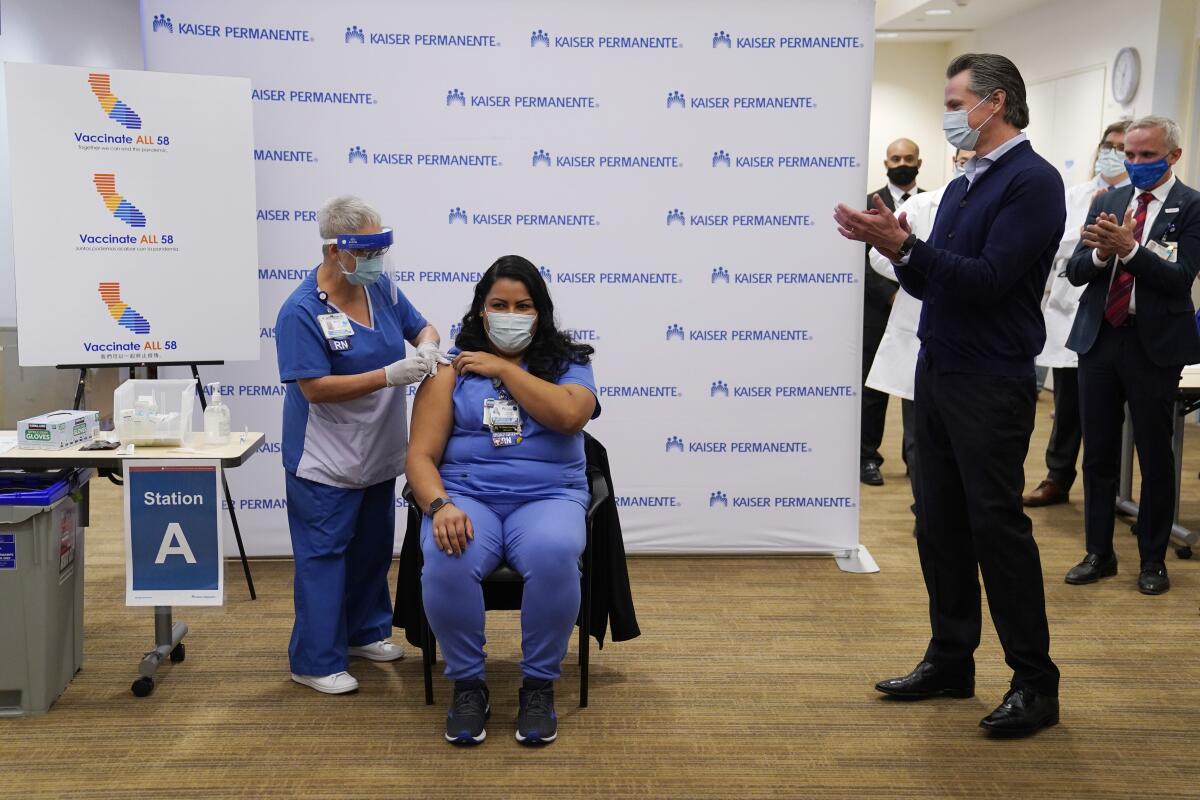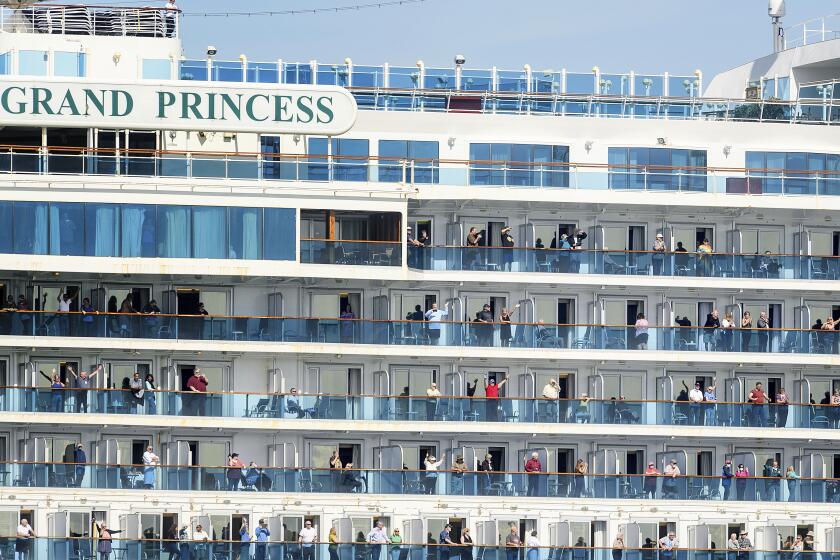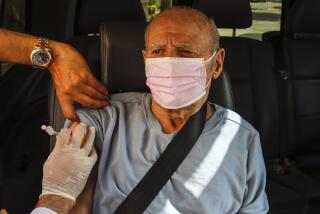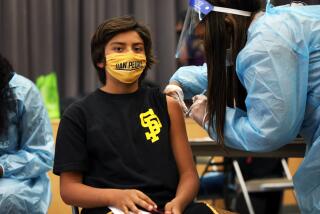California working on who will be next in line for the coronavirus vaccine

- Share via
With vaccinations under way in California for frontline healthcare workers and long-term care residents, a state advisory panel is trying to determine who will be next in line when the next wave of the vaccines become available.
The decision for who comes next will rely heavily on public input, California Surgeon General Dr. Nadine Burke Harris said during a meeting Wednesday of the state’s community vaccine advisory committee. The distribution plans will also depend on guidance from the Centers for Disease Control and Prevention.
The state expects to distribute between 2 million and 2.5 million vaccine doses by the first week of January. That would include both the Pfizer BioNTech vaccine and the newly authorized Moderna vaccine.
By the end of February, that total is expected to reach 12.5 million — a note of hope as California hit 2 million coronavirus cases on Wednesday.
“There’s less vaccine than people who need it, so we’re having to make very difficult decisions,” said Dr. Oliver Brooks, a co-chair of the panel drafting the state’s distribution guidelines.
The current proposal for the next phase, which is expected to begin in January, includes individuals who work in education and child care, emergency services and agriculture, as well as individuals 75 and older.
Next would come those who work in critical manufacturing, industrial commercial facilities and transportation, as well as those between 65 and 74 and homeless individuals. Those who are incarcerated are also included in this tier, although at least one state prison has already started to receive the vaccine.
The Times confirmed Tuesday that the California Health Care Facility, Stockton, which houses inmates with special medical needs, has received some of the first coronavirus vaccines.
The Grand Princess cruise ship floated off the California coast for days while officials wrestled with the emerging coronavirus outbreak. Here’s what it was like on board.
Inmates in federal prison would not receive state resources, but instead would receive vaccines through the federal supply, said Dr. Robert Schechter, the California Department of Public Health’s Immunizations Branch Chief.
The advisory committee, which is separate from the 16-member committee drafting the guidelines, met for two hours on a video call over Zoom to address public comment and discuss plans to reach the most vulnerable and those in communities hit hardest by the virus.
Some expressed concern about focusing on age over illness. Others said that distribution plans must account for at-risk people who lack access to a distribution site.
Once the state deploys the vaccine to a county, it’s up to local public health officials to determine how to distribute the doses and reach people via proper messaging.
There are 61 local public health departments in the state — one in each of the 58 counties and the cities of Pasadena, Long Beach and Berkeley. That means the distribution efforts will differ from rural communities to urban landscapes.
“I feel markedly more comfortable with vaccine distribution than other elements of pandemic response because it’s really in the public health wheelhouse,” said Mariposa County Health Officer Dr. Eric Sergienko.
The advisory committee meets again on Jan. 6. Those who wish to make public comments are advised to send an email to CDPH at [email protected].
More to Read
Sign up for Essential California
The most important California stories and recommendations in your inbox every morning.
You may occasionally receive promotional content from the Los Angeles Times.












